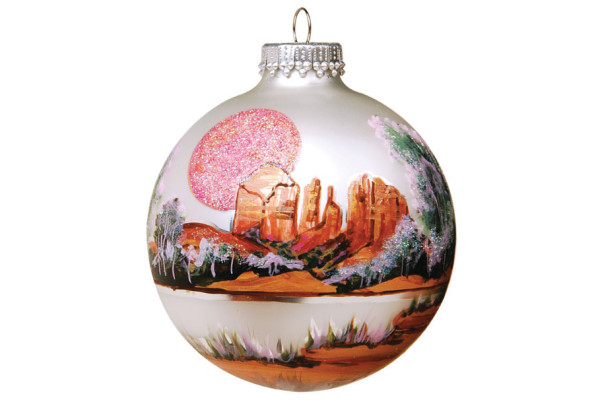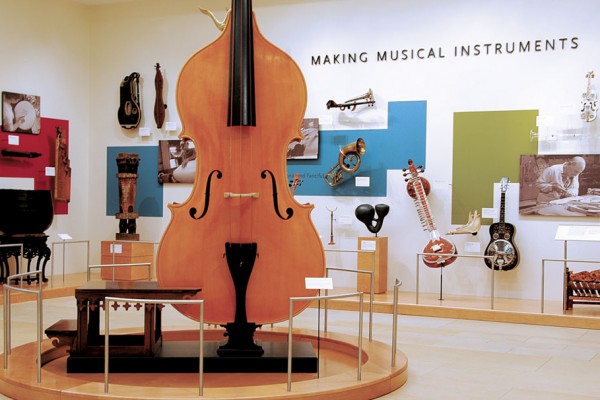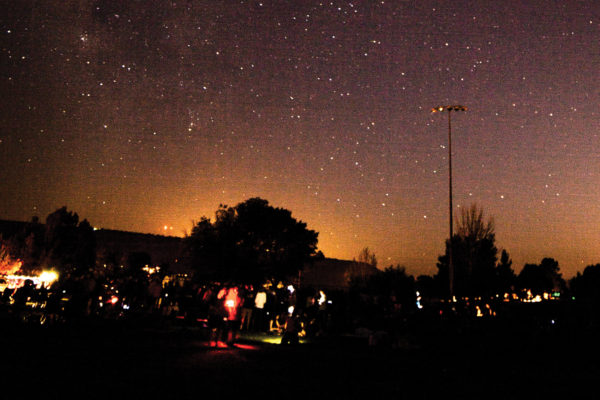Continued (page 2 of 2)
After about two-and-a-half hours, we reached The Wave, its sandstone strata swooshing, dipping, corkscrewing, winding and slashing through what seemed like the world’s largest mixing bowl. We felt like kids left alone and let loose in the middle of the world’s best playground. Mock surfing ensued. We climbed to the lip of the bowl and watched as other hikers, their bright permits attached to their backpacks and fluttering in the wind, entered the area with mouths agape. We discovered grottos with shallow sandy bottoms and pieces of stray driftwood. We couldn’t stop running our hands over the smooth yet raised ridges that make up the formation. No matter how many times we’d been mesmerized by photos of The Wave, we’d never seen an image that had captured its unique texture. It was apparent that the ridges were fragile, and instantly it became obvious why the BLM so closely guards this national treasure. If as many people visited The Wave as visit nearby Antelope Canyon, trampling boots would ruin it. The fragility of the landscape made us want to remove our shoes and tiptoe around in our socks, but we refrained.
There are countless places to lounge around and observe the changing colors of the rocks as the sun journeys across the brilliant blue sky, and we had the good luck of being there at the time of year when the moon sets behind the rocky ridge in front of the Wave. But our readers know us by now – we can’t sit still for long. We were compelled to explore the area further. We spied an arch high above The Wave, but chose not to tackle what looked to be a completely vertical climb to reach it. We hiked southwest instead, and after a few hundred yards we came upon Hamburger Rock, a bright orange boulder about four feet tall that is a dead ringer for a Quarter Pounder with Cheese and all the fixings. From this vantage point, we had tremendous views of the surrounding valley, colorful domes and a distant plateau that we believed to be the location of Bryce Canyon National Park.
Within another couple hundred feet we found the Second Wave, much smaller and much greener than its sister formation with deep ridges. It was more like a series of cliffs rather than a bowl. Below the Second Wave, we discovered an alcove that was perfect for enjoying lunch and watching non-threatening clouds build to the north. The landscape in front of us made us think of kaleidoscopes, LSD artwork circa 1969, and the swirls and textures of a van Gogh painting. More than any landscape we’ve had the pleasure of exploring, The Wave stirred our creative juices and made us hungry for more photos, more adjectives.
Ravens soared overhead, and we kept our eyes peeled for California condors. The national monument has served as the Arizona release site for the federally protected bird since the condors were first released into the wild in 1996, but we didn’t see one during our visit. You can also find sets of small dinosaur tracks located on the other side of the wash across from The Wave, but we’ve seen quite a few dinosaur tracks since we’ve been living in the Southwest, and no one was in a hurry to leave The Wave. Chances are, it would be the only time we’d ever see this particular masterpiece from Mother Nature, and we were all too aware of it. You can’t drive to The Wave the way you can drive to one of the Grand Canyon’s famous viewpoints, and you can’t hop on a donkey to discover its depth. You have to work for The Wave.
We didn’t see or hear another person the entire time we were in the alcove. We headed back to The Wave mid-afternoon and spent the next few hours hanging out in the main bowl and photographing to our heart’s content. The majority of the visitors had left by this time, so the area seemed even more isolated. Since we were hiking in early October, the shadows showed up earlier than expected, rendering photography impossible in the main bowl by 3 p.m. We headed back the way we came in revered quiet, not unlike a car ride home from Disneyland when you realize all the planning and excitement has come to an end. We knew that we had just experienced a unique pocket of the world that most people would never see, and we left with a feeling of responsibility that we needed to use our photos and words to make everyone feel like they, too, had surfed the rings of Saturn, or at least Arizona’s Wave.
MORE SEDONA ROAD TRIPS: Lake Powell, Havasu Canyon, photographing Arizona, 3 slot canyons, 10 places to go to beat the Arizona heat, Acoma Pueblo, Grand Canyon, Oak Creek Canyon, Crown King, Jerome, Sunset Crater Volcano, Wupatki National Monument, Arizona animal parks, Monument Valley, Phoenix’s Musical Instrument Museum, Navajo National Monument, Mormon Lake, Canyon de Chelly



